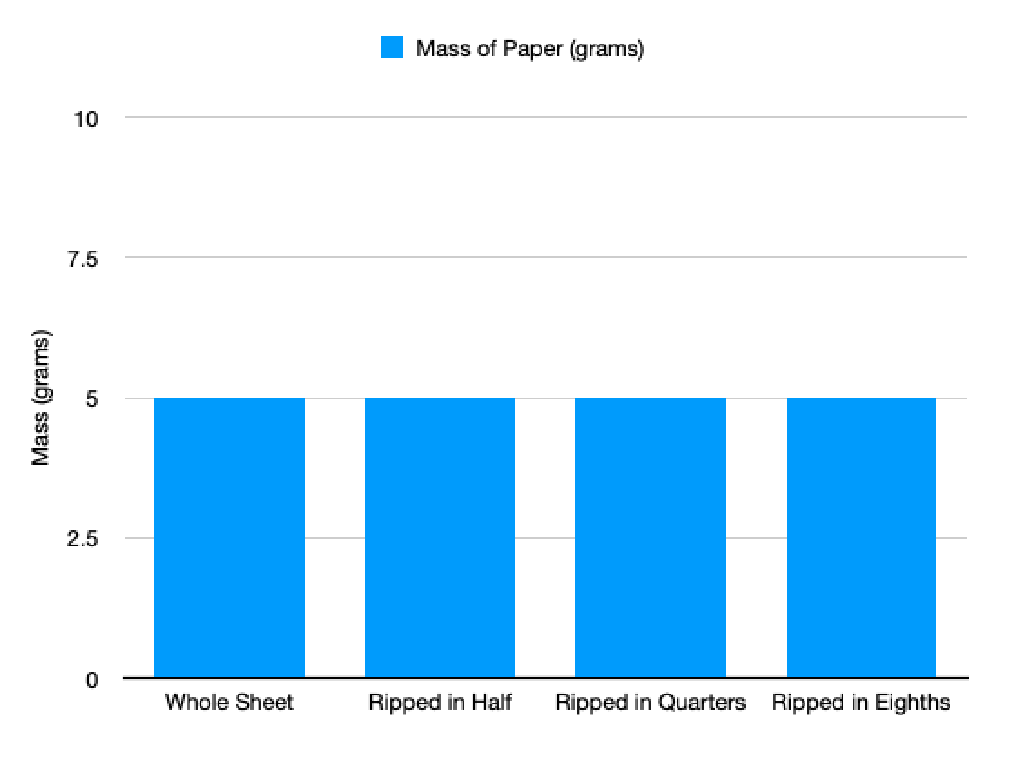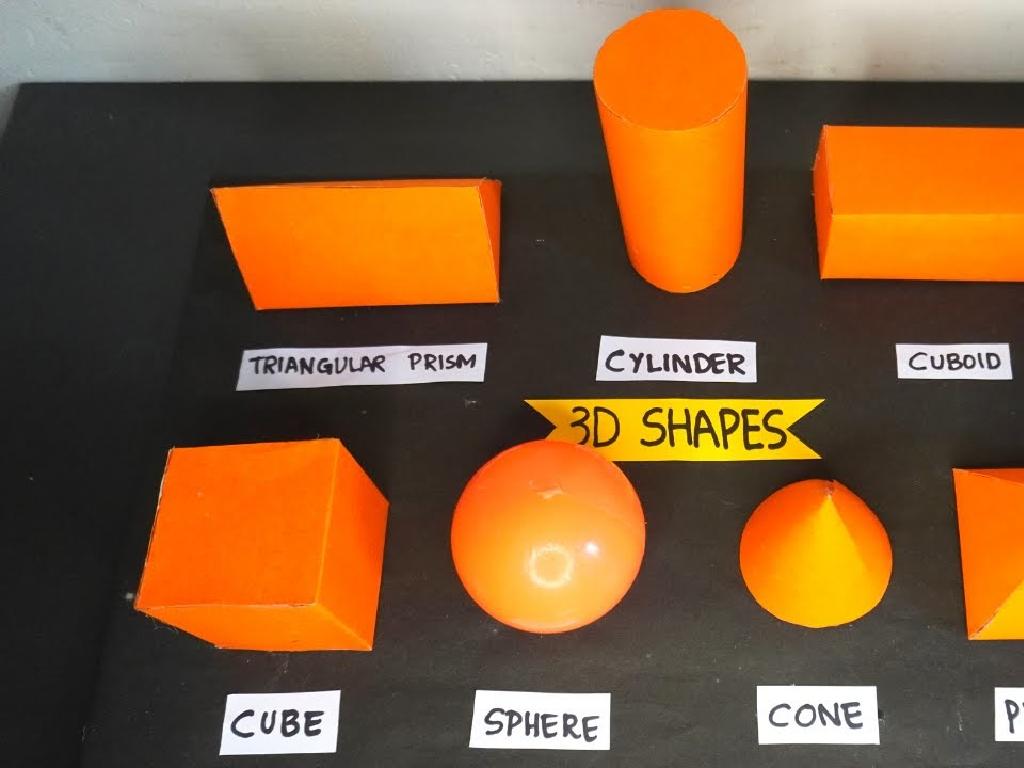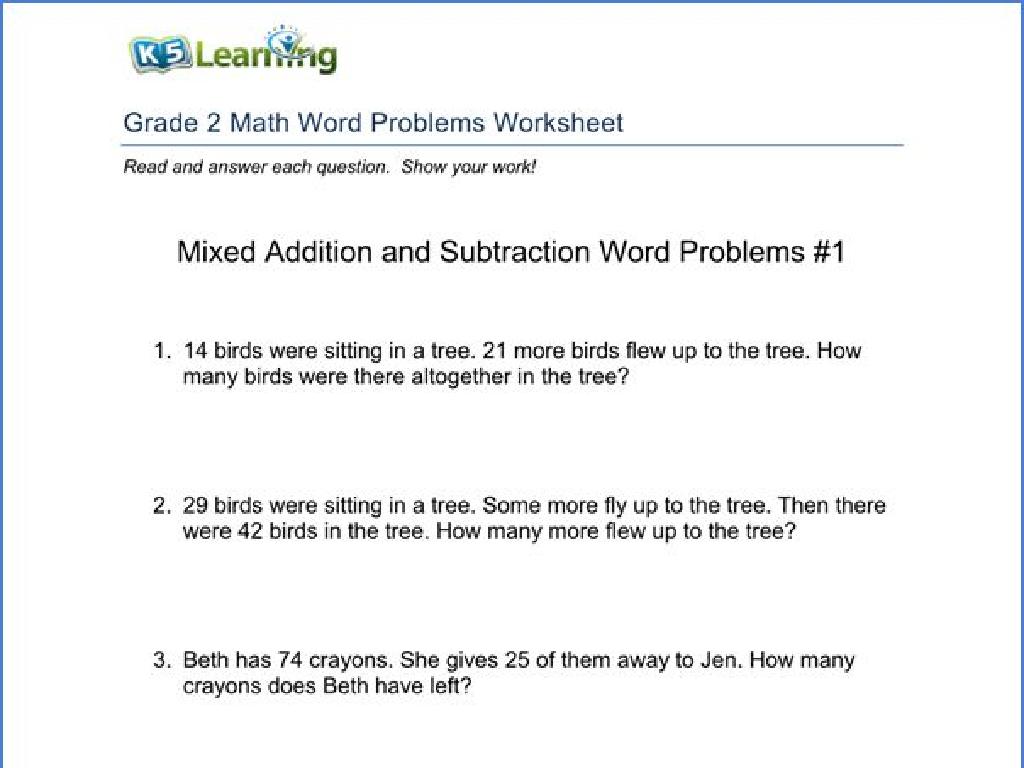Reflections Over The X- And Y-Axes: Find The Coordinates
Subject: Math
Grade: Eighth grade
Topic: Transformations And Congruence
Please LOG IN to download the presentation. Access is available to registered users only.
View More Content
Reflections over the x- and y-axes
– What are transformations?
– Movements of figures in a plane, like slide, flip, or turn
– Congruence in transformations
– Figures are congruent if they have the same shape and size
– Reflecting over the x-axis
– (x, y) becomes (x, -y) when reflected over the x-axis
– Reflecting over the y-axis
– (x, y) becomes (-x, y) when reflected over the y-axis
|
Begin with an explanation of transformations as operations that move or change figures in a plane while preserving certain properties. Discuss congruence as a concept where shapes are identical in form and size, an important aspect of transformations. Focus on reflections, a type of transformation that ‘flips’ a figure over a line. When reflecting over the x-axis, the y-coordinate changes sign, while reflecting over the y-axis, the x-coordinate changes sign. Provide examples on the board and encourage students to visualize by drawing the axes and reflecting points. This understanding is crucial for mastering the topic of transformations and congruence.
Understanding Reflections in Geometry
– Define geometric reflection
– A flip over a line where the image is a mirror image of the original shape
– Reflecting across a line
– Like a mirror image, points are the same distance from the line but on opposite sides
– Real-world reflection examples
– Light in a mirror, echo of sound, or symmetry in butterfly wings
– Reflections in coordinate plane
– When reflecting over the x-axis or y-axis, the coordinates of points change systematically
|
This slide introduces the concept of reflection in geometry, which is akin to looking in a mirror. It’s important to explain that in a reflection, every point of the original shape appears at an equal distance on the opposite side of a given line, known as the line of reflection. Use everyday examples like reflections in water or mirrors to illustrate the concept. Then, connect these ideas to the coordinate plane, where reflections over the x- and y-axes involve changing the sign of the respective coordinates. Encourage students to visualize this by imagining flipping a shape over the axes and observing the changes in coordinates.
Reflections Over the X-axis
– Reflecting a point over the x-axis
– Rule for reflection: (x, y) to (x, -y)
– If a point is above the x-axis, its reflection appears directly below with the same x-coordinate
– Practice example: (3, 4) reflected
– Original point (3, 4) becomes (3, -4) after reflection
– Class activity: Find reflected points
– Use graph paper to reflect points A(2, 3), B(-1, 1), and C(-4, -2) over the x-axis
|
This slide introduces the concept of reflecting points across the x-axis. Start by explaining that a reflection is a type of transformation that creates a mirror image of the original figure. Emphasize that when reflecting over the x-axis, the x-coordinate remains the same while the y-coordinate is multiplied by -1, thus ‘flipping’ the point over the x-axis. Provide a practice example with coordinates to illustrate this rule. For the class activity, have students plot points on graph paper and find their reflections. This will help them visualize the concept and understand how the coordinates change after reflection. Possible activities include reflecting various shapes or sets of points to reinforce the concept.
Reflections Over the Y-axis
– Reflecting a point over the y-axis
– Rule for reflection: (x, y) to (-x, y)
– To reflect a point, invert the x-coordinate’s sign
– Practice example: (3, 4) reflected
– Original point (3, 4) becomes (-3, 4) after reflection
– Analyze coordinates post-reflection
– Observe how only the x-coordinate changes
|
This slide introduces the concept of reflecting points across the y-axis. The rule is straightforward: for any point (x, y), the reflected point is (-x, y), which means we only change the sign of the x-coordinate. Start with a simple example, like reflecting the point (3, 4), to show that it becomes (-3, 4) after reflection. Emphasize that the y-coordinate remains the same while the x-coordinate sign is inverted. Encourage students to practice with different points and to visualize the reflection on a Cartesian plane. This will help solidify their understanding of reflections over the y-axis.
Reflections in the Coordinate Plane
– Combining reflections over axes
– Reflect over x-axis, then y-axis, or vice versa
– Reflections’ impact on shapes
– Shapes remain congruent; orientation changes
– Reflect a triangle interactively
– Use a grid to flip a triangle over x or y
|
This slide introduces students to the concept of reflections in the coordinate plane, emphasizing the process of combining reflections over the x- and y-axes. It’s crucial to explain that while the shape remains congruent, meaning the size and shape are preserved, the orientation of the shape changes after reflection. Provide an interactive example, such as reflecting a triangle on a coordinate grid, to help students visualize the transformation. Encourage students to practice reflecting various shapes to solidify their understanding. This activity will prepare them for more complex transformations and the concept of congruence in geometry.
Let’s Practice Reflections!
– Identify reflections of points
– Use graph paper to plot points and their reflections
– Reflect shapes over axes
– Flip shapes over the x-axis or y-axis on the graph
– Pair up for reflection problems
– Work with a partner to solve given reflection problems
– Discuss solutions with class
– Share and explain your answers with the class
|
This slide is designed for a class activity to practice reflections over the x- and y-axes. Students should first understand how to identify the reflections of given points on a coordinate plane. Then, they should apply this knowledge to reflect entire shapes over the axes. Organize the class into pairs and distribute reflection problem worksheets. Encourage collaboration and discussion among students as they work through the problems. After the activity, facilitate a class discussion where pairs can present their solutions and reasoning. This will help reinforce their understanding of reflections and provide an opportunity for peer learning. Possible activities include reflecting points across axes, reflecting simple shapes, and challenging students to predict reflections before plotting.
Reflections and Congruence in Math
– Reflections preserve size & shape
– A mirror image is a perfect example of reflection; it’s identical in size and shape to the original.
– Congruent figures: same size & shape
– Two figures are congruent if they can be overlapped exactly, like two identical puzzle pieces.
– Real-life applications of reflections
– Reflection symmetry in architecture, art, and nature, like butterfly wings or building facades.
– Understanding congruence in objects
– Recognizing congruent objects helps in solving puzzles and understanding symmetry in design.
|
This slide introduces the concepts of reflections and congruence, emphasizing that reflections do not alter the size and shape of a figure, which is a key concept in understanding congruence. Congruent figures are identical in size and shape, and this property is foundational in geometry. Real-life examples, such as symmetry in nature and architecture, make these concepts relatable and easier to grasp. Encourage students to look for examples of congruence and reflection in their surroundings. This understanding is crucial for recognizing patterns and solving geometric problems.
Class Activity: Reflection Art
– Create reflective artwork
– Use x- or y-axis as symmetry line
– Draw an image and then flip it across an axis
– Share your art with the class
– Explain your choice of axis and how it affected your art
– Discuss the reflection process
– Talk about the math behind the art
|
This activity is designed to help students understand reflections in a fun and creative way. Students will create an artwork that includes a line of symmetry along either the x- or y-axis. They should draw one half of the image on one side of the axis and then reflect it onto the other side. After completing their artwork, students will share it with the class and discuss why they chose a particular axis, how it influenced their design, and the mathematical concept of reflection. Encourage students to observe the changes in coordinates after reflection. Possible variations of the activity could include using different shapes, creating multiple reflections, or even reflecting over both axes. This will help solidify their understanding of reflections over the x- and y-axes.
Reflections: Rules & Real-Life Applications
– Recap reflection rules over axes
– When reflecting over the x-axis, y-coordinates change sign. Over the y-axis, x-coordinates change.
– Reflections in the real world
– Mirrors, symmetry in nature, and design often involve reflection.
– Open Q&A session
– Clarify any doubts
|
This slide aims to consolidate students’ understanding of reflections over the x- and y-axes. Begin with a brief review of the rules for reflecting points across the axes, emphasizing the change in sign for the coordinates. Draw connections to real-life examples of reflection, such as the way mirrors work or symmetry in butterfly wings, to help students see the relevance of reflections. Open the floor for an interactive Q&A session, encouraging students to ask questions or express any confusion they may have. Be prepared to offer additional examples or explanations to clarify concepts. This interactive review will help ensure students are well-prepared for any upcoming assessments on transformations and congruence.
Homework: Mastering Reflections
– Complete Reflection Worksheet
– Practice reflecting points/shapes
– Use graph paper to reflect over x-axis and y-axis
– Review transformation concepts
– Go over notes on rotations, translations, and reflections
– Get ready for next quiz
|
This homework assignment is designed to reinforce students’ understanding of reflections over the x- and y-axes. The worksheet provided should contain a variety of problems that require students to find the coordinates of points and shapes after reflection. Encourage students to use graph paper for accuracy when practicing reflections at home. They should also review their notes and textbook sections on different types of transformations, including rotations and translations, to prepare for the upcoming quiz. The quiz will assess their ability to apply the concepts of transformations to various problems.





